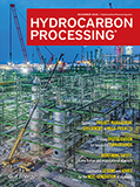September 2024
Carbon Capture/CO2 Mitigation
Retrofitting CO2 capture in a petroleum refinery
This article examines the application of solvent absorption-based post combustion capture for refinery/site-specific factors and quantifies the impact this will have on CCS CAPEX/OPEX. This analysis helps to determine the optimum approach for any individual refinery site.
This is a preview of our premium content. Thank you for your interest—please log in or subscribe to read the full article.







Comments